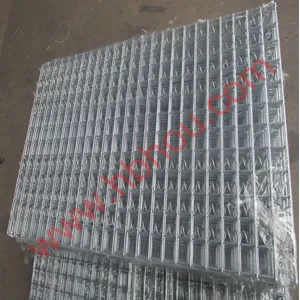Composite Round Posts The Future of Structural Supports
Composite round posts have emerged as a revolutionary solution in the construction and engineering sectors. These posts, made from a combination of materials such as fiber-reinforced polymers (FRPs) and other composite materials, offer a range of benefits that traditional materials, like wood or steel, simply cannot match. As industries strive for enhanced performance, durability, and sustainability, composite round posts stand out as a compelling option.
What are Composite Round Posts?
Composite round posts are cylindrical structural elements that leverage the strength-to-weight ratio of advanced composite materials. Typically, these posts are manufactured by layering fibers – which can include materials like fiberglass or carbon fiber – within a polymer matrix. This manufacturing process creates a lightweight yet incredibly strong product. The geometric shape of round posts also contributes to their structural integrity, allowing them to withstand various loads and stresses.
Advantages of Composite Round Posts
1. Durability and Longevity One of the most significant advantages of composite round posts is their resistance to environmental factors. Unlike wooden posts that can rot, warp, or attract pests, composite materials are impervious to moisture and pests. They can endure extreme weather conditions, including heavy rain, snow, and UV radiation, which ensures longer service life and reduces maintenance costs.
2. Corrosion Resistance In applications where metal posts are typically used, such as marine environments or areas with high humidity, corrosion becomes a critical issue. Composite round posts do not corrode, offering a significant advantage over traditional steel or aluminum. This characteristic is particularly vital in industries such as construction, agriculture, and waterfront applications, where exposure to moisture is constant.
3. Sustainability With the global push towards sustainability, composite materials have gained momentum. Many composite round posts are manufactured using recycled materials and can themselves be recycled at the end of their lifespan. This makes them a more environmentally friendly choice compared to traditional materials that contribute to deforestation or environmental degradation through mining processes.
composite round posts

4. Flexibility in Design Composite materials can be engineered to meet specific load-bearing and aesthetic requirements. This flexibility allows architects and engineers to create innovative designs that were once thought challenging. Composite round posts can be produced in various sizes, colors, and finishes, offering aesthetic appeal while maintaining functional superiority.
5. Cost-Effectiveness While the initial investment in composite round posts might be higher than traditional options, the long-term savings are substantial. Reduced maintenance costs, longevity, and efficiency in production can lead to lower overall lifecycle costs. For contractors and builders, this means fewer replacements and repairs, making their projects more profitable.
Applications of Composite Round Posts
The versatility of composite round posts has led to their adoption across various sectors. In the construction industry, they are used for supports, railings, and fencing. Their light weight makes installation faster and more straightforward, reducing labor costs.
In agriculture, composite round posts are increasingly utilized for fencing, animal enclosures, and vineyard stakes due to their durability and resistance to weather conditions. Additionally, in marine applications, these posts are ideal for docks and piers, where they can resist corrosion and handle the stresses of tidal movements.
Municipal projects benefit from composite round posts in park benches, lighting poles, and outdoor signage, where aesthetics and longevity are essential. With the rise of smart city initiatives, the integration of composite materials into urban infrastructure represents a forward-looking approach.
Conclusion
The future of structural supports is undoubtedly leaning towards composite round posts. As industries continually seek solutions that blend durability, sustainability, and cost-effectiveness, these innovative materials offer a promising path ahead. With an emphasis on technological advancements and environmental responsibility, composite round posts are not just a trend but a fundamental shift in how we think about and use building materials. For architects, builders, and engineers, embracing this change is crucial to pave the way for more resilient and sustainable infrastructures.
















